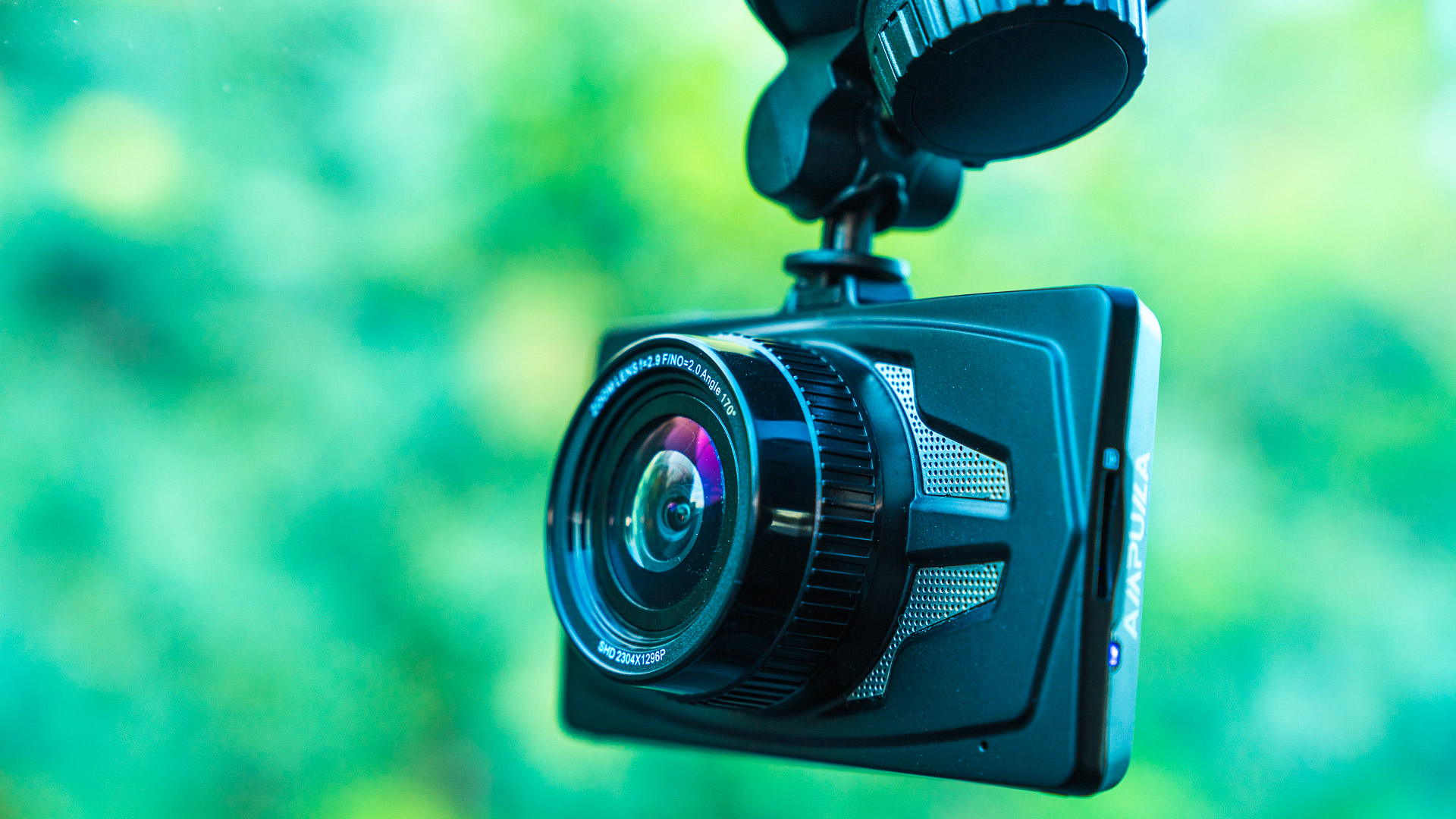
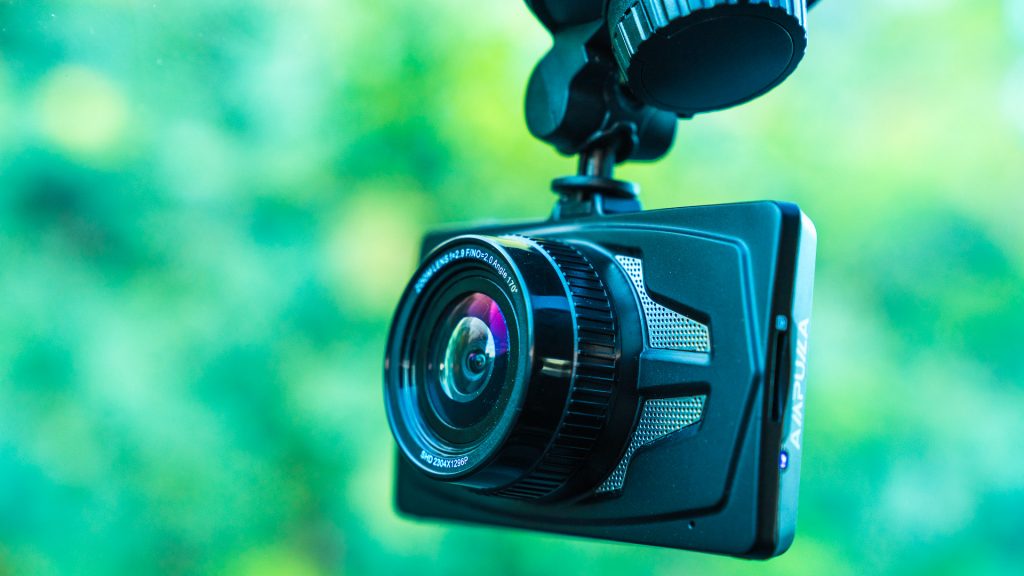
Dashboard cameras, or dash cams, are increasingly popular. People install them for a variety of reasons, including as protection against scam artists who trap motorists in contrived “accidents,” for capturing meteors as they streak across the sky, and generally to record where they’re coming and going for posterity.
These mobile digital video recorders (DVRs) come in all kinds of shapes, sizes, and configurations, while ranging in price from less than $50 to upwards of $500 and more. They come with and without global positioning system (GPS) support, can capture forward-facing video only or add in a rear-facing camera as well, and they can support wireless connectivity for easily transferring video to a PC.
Here are just some of the features and functionality that you’ll want to consider when choosing a dash cam:
Resolution: Most of today’s dash cams can record at 1080p (Full HD, or 1,920 x 1,080) resolution or better, meaning they’ll provide incredibly high-quality video with copious amounts of detail. Most dash cams record in the 16:9 aspect ratio that’s familiar to movie and TV watchers, and some up the resolution to 1440p (QHD, or 2,560 x 1,440) or even 2160p (4K UHD, or 3,840 x 2,160). Others provide a wider aspect ratio, meaning it will catch more of the road to each side.
Storage: Most dash cams use microSD cards for storage, and some bundle a card. While today’s microSD cards can range up to 512GB of storage, some cameras limit how large a card they can support.
Night mode: Most dash cams provide a night mode that can capture the action in darker environments, and quality varies by manufacturer. Look for larger apertures and features like wide dynamic range (WDR) for better night vision.
Field of view: You’ll want at least a 120- to 140-degree field of view to capture a width swatch of the road in front or behind. Some dash cams drop down to 90 degrees while some jump up as high as 170 degrees. Note that the wider the field of view, the more the video is going to take on a fisheye appearance.
GPS: A dash cam that captures GPS coordinates alongside the video will help with establishing the facts in an accident as well as letting you know where something particularly interesting happened.
Dual-channel video: This merely refers to whether a dash cam has both front and rear cameras. Adding cameras makes a dash cam more expensive and complicated, it uses more storage space, and it often requires more wiring. However, it also literally doubles the amount of video you’re recording, and capturing where you’ve been can add to the value of a dash cam system.
Continuous loop recording: Because storage is naturally limited, dash cams tend to record video in a loop, eventually recording over old footage. Usually, you can lock clips to make sure that important moments aren’t overwritten.
Event detection: You’ll want to look for a dash cam that includes a G-sensor that can trigger whenever there’s a forceful event, such as an accident or sudden braking. These systems will automatically lock the video during those incidents so that they’re not written over and can be referenced later during any disputes.
Parking mode: Some dash cams include a parking mode that will start the camera when the vehicle is stopped, such as when the care is hit or broken into. Better systems will use a buffered system so that video is immediately recorded.
Power: Most dash cams use 12-volt power that’s provided by plugging into a vehicle’s auxiliary power outlet (or cigarette lighter port, in some cars). Some also have batteries or capacitors to provide power for short periods of time while the vehicle’s juice is unavailable.
In this overview, we’re taking a look at two dash cams from Ampulla, the Pluto single-channel camera for $159.95 and the Cruiser dual-channel camera for $179.95.
Design
Pluto
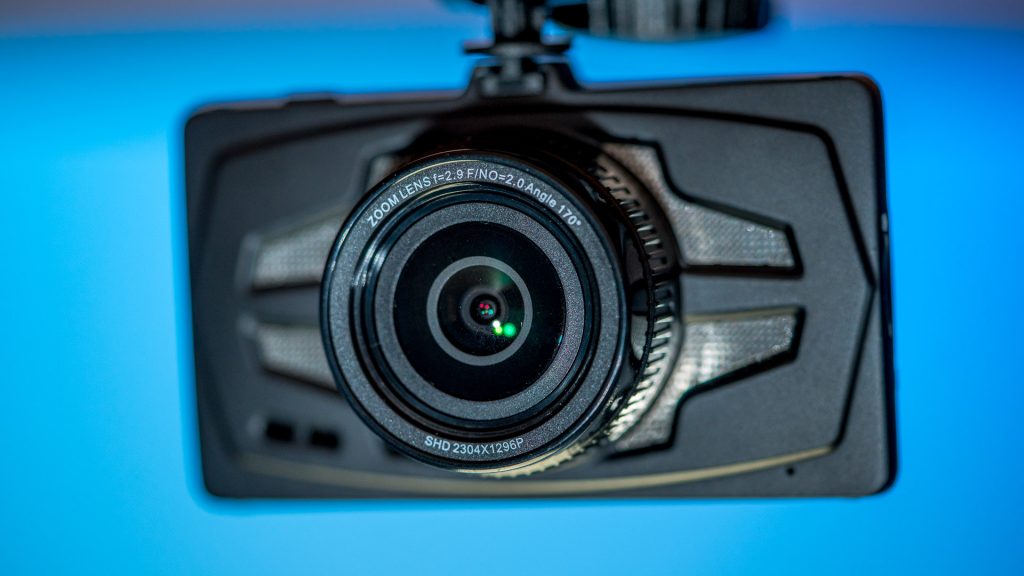
The Pluto dash cam is a single channel system that captures Super HD (2,304 x 1,296) resolution video at 30 frames per second (FPS), Full HD at 45 FPS, and HD (1,280 x 720) at 60 FPS. The camera has a six-layer full glass lens that provides a very wide 170-degree angle, and both high dynamic range (HDR) and WDR are supported for good night vision performance. The action can be monitored and played back on the 3.0-inch TFT LCD display, and the H.264 compressed format video should work well for PC-based editing.
The Pluto is housed in an attractive black package, with simple mode controls along the right side, recording and reset buttons along the top next to the microUSB port, a microSD card slot on the left side (supporting up to 64GB, not included), and an HDMI port on the bottom for connecting to an external display. Finally, there’s a microphone and speaker for recording and reviewing sounds inside the vehicle.
Here are the complete specifications for the Pluto dash cam:
| Lens | 170-degree wide viewing angle, 6-layer glass, wide aperture F/2.0 |
| Resolution | Up to 2,304 x 1,296 @ 30 FPS |
| Night vision features | HDR, WDR |
| Video format | H.264 compressed MOV format |
| Image format | 12 megapixel JPEG |
| Loop recording | From one to 10 minutes per loop, system keeps 25% of memory card space for locked video clips |
| G-Sensor | Locks video when shaking or collision occurs, seven sensitivity settings |
| Motion-detection | Can start and stop recordings based on vehicle motion, e.g., when stopped at a red light |
| Parking monitor | Triggered by G-sensor to created locked video when shaking or collision occurs while vehicle is parked and turned off. Silent recording is utilized to consume minimal power, and video length can be set from 10 to 45 seconds. |
| Time lapse mode | Useful for reducing storage space, alters the frame rate. |
| Watermarking | A date/time stamp, machine logo, or plate number stamp can be added to video as a watermark. |
| Photo mode | Press the OK/Record button to capture a photo. |
| Display | 3.0-inch TFT LCD |
| Digital Signal Processor | OV4689 |
| Memory | Internal memory 128MB, accepts Class 10 SDHC card up to 64GB |
| USB | microUSB 2.0 |
| Battery | 130mAh 3.7V polymer li-ion |
Cruiser
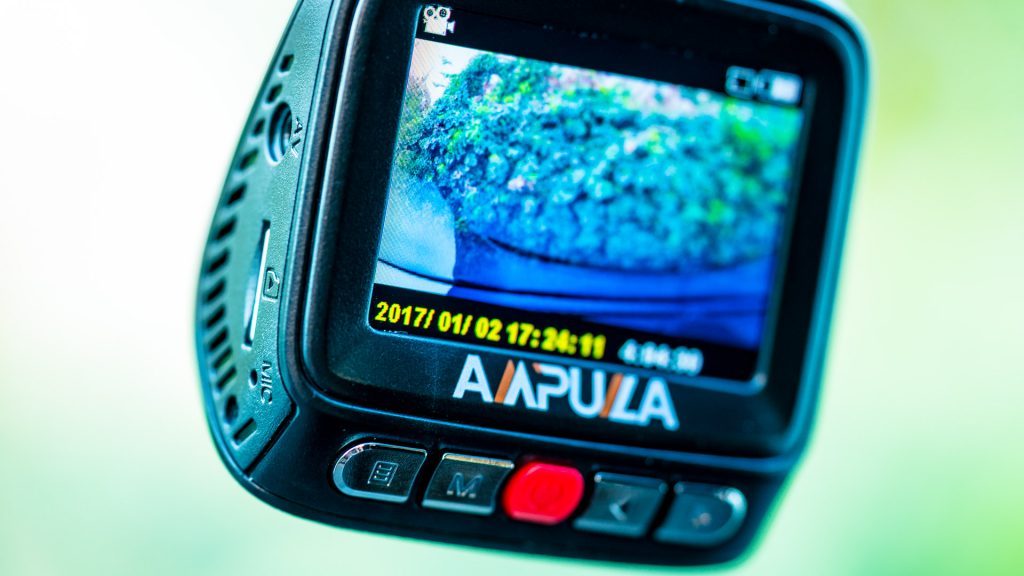
The Cruiser dash cam doubles the fun, adding in a second channel and a rear 720p 160-degree camera to the front 1296p Super HD 170-degree camera – however, the front camera is limited to 1080p when both channels are recording. Like the Pluto, the Cruiser supports WDR for high-quality night vision performance. Video can be viewed on the 2.0-inch LCD display, or the H.264 video files can be edited on a PC.
The Cruiser comes in two parts, a small black plastic unit housing the display and front camera, and a small cube housing the rear camera. The mode and power controls are mounted on the front unit along the bottom of the display, the microSD slot (supporting up to 128GB, with a 32GB card in the box) and reset button are on the left side, and the microUSB port is on the right side. A microphone and speaker support recording and playing back interior sound.
Here are the complete specifications for the Cruiser dash cam:
| Lens | Front camera: 170-degree wide viewing angle, 6-layer glass, wide aperture F/2.0 Rear camera: 160-degree wide viewing angle, multi-layer glass lens |
| Resolution | Front cam: Up to 2,304 x 1,296 @ 30 FPS without rear cam enabled Up to 1,920 x 1,080 @ 30 FPS with rear cam enabledRear cam: 1,280 x 720 @ 25 FPS |
| Night vision features | WDR |
| Video format | H.264 compressed MOV format |
| Image format | 14 megapixel JPEG |
| Loop recording | From one to 10 minutes per loop, system keeps 25% of memory card space for locked video clips |
| G-Sensor | Locks video when shaking or collision occurs, seven sensitivity settings |
| Motion-detection | Can start and stop recordings based on vehicle motion, e.g., when stopped at a red light |
| Parking monitor | Triggered by G-sensor to created locked video when shaking or collision occurs while vehicle is parked and turned off. Silent recording is utilized to consume minimal power, and video length can be set from 10 to 45 seconds. |
| Time lapse mode | Useful for reducing storage space, alters the frame rate. |
| Watermarking | A date/time stamp, machine logo, or plate number stamp can be added to video as a watermark. |
| Photo mode | Press the OK/Record button to capture a photo. |
| Display | 2.0-inch TFT LCD |
| Digital Signal Processor | M-Star 8328P |
| Memory | Internal memory 512MB, accepts Class 10 SDHC card up to 128GB |
| USB | microUSB 2.0 |
| Battery | 180mAh 3.7V polymer li-ion |
Installation
Pluto
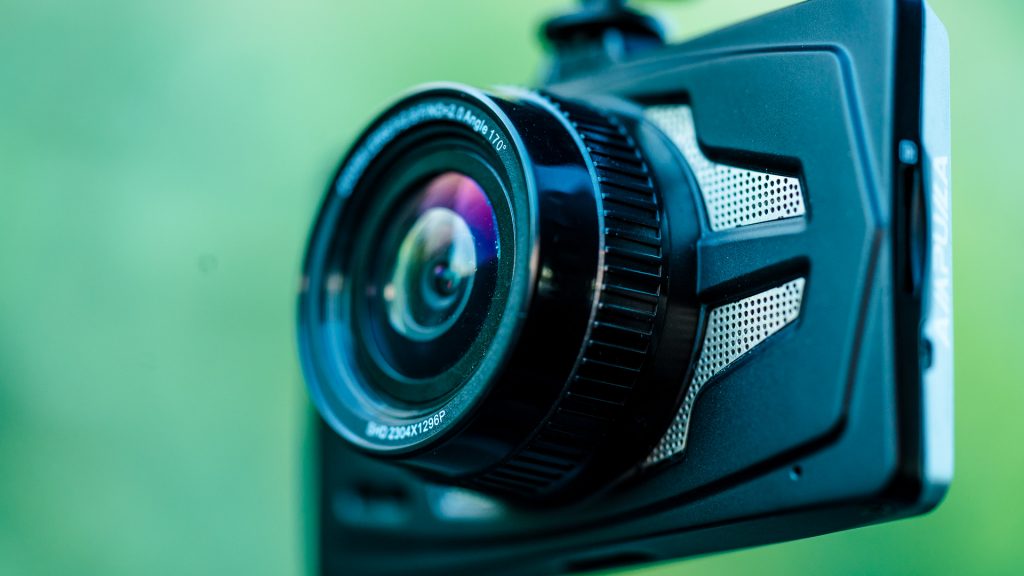
The Pluto dash cam comes with a suction cup windshield mount that slides into a port on the top of the unit, and it’s as easy to install as any other suction cup mount. Simply twist and unlock the buckle on the side of the locking lever to apply it to the windshield, and the twist the locking lever to secure the mount in place. You can then attach and detach the dash cam, leaving the windshield mount in place.
Next, insert the microSD card into the slot – it’s recommended that you format the card as FAT32 beforehand, or you can format it in the camera. Then, just plug the included 12-volt power adapter into the auxiliary power supply or cigarette lighter port, and then plug the other end into the Pluto’s microUSB port. The dash cam will turn on automatically and start recording once it’s plugged in, and you can manually control power by pressing and holding the power button.
Cruiser
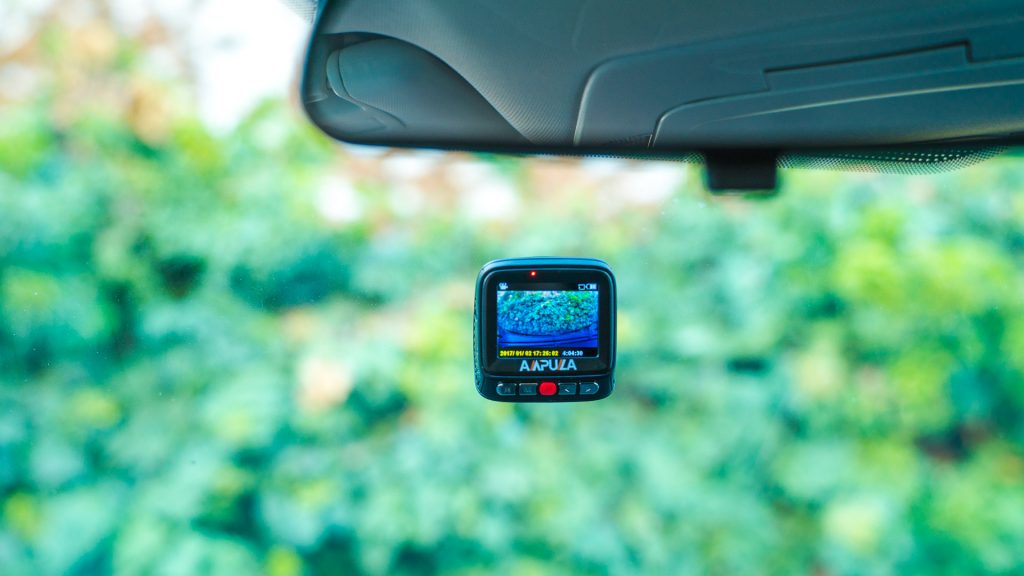
The Cruiser uses a 3M adhesive mount that attaches directly onto the windshield. The front camera unit then slides onto the mount, which stays attached to the windshield. To get the system up and running, just insert the microSD card into the slot, preferably preformatted as FAT32, and then plug the 12-volt power adapter into the power supply and the other end into the microUSB port on the front camera. The Cruiser will turn on and start recording automatically, and it can be manually turned on and off using the switch.
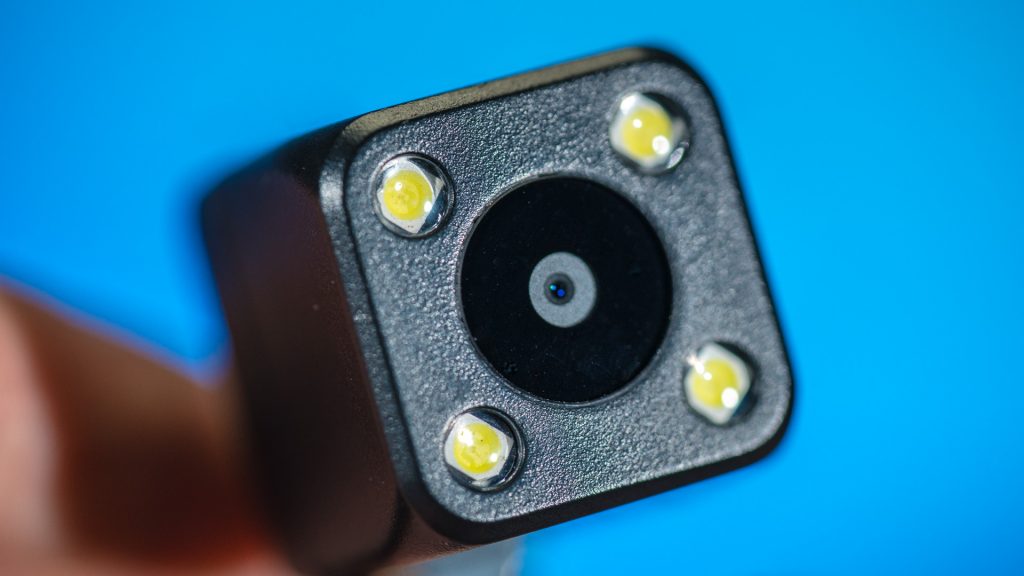
The rear camera is attached via an 18-foot cable that is intended to run behind the passenger seats. Ampulla recommends one of three placements, at the top of the rear windshield, on the rear dash at the bottom of the windshield, and professionally installed in the rear of the vehicle. The company recommends the first option, which provides the best upper and lower coverage.
Configuration
Pluto
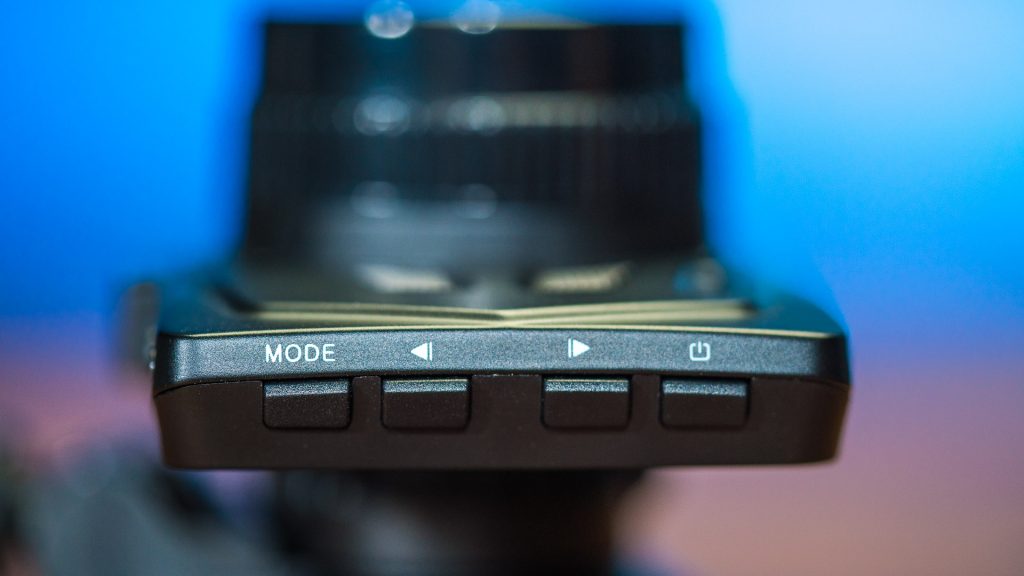
The Pluto is configured using the power/menu and mode buttons and navigating through the on-screen interface. Here, you can change the video resolution, change the loop recording rate from one to 10 minutes, establish the G-sensor level to determine when recording will start when the vehicle experiences any shaking, and set up the parking monitor.
Overall, the Pluto has an extensive range of settings that allow you to optimize the recording experience. The interface is easy to navigate and clear, making the Pluto easy to operate, and the screen provides copious amounts of information on the system’s operation.
Cruiser
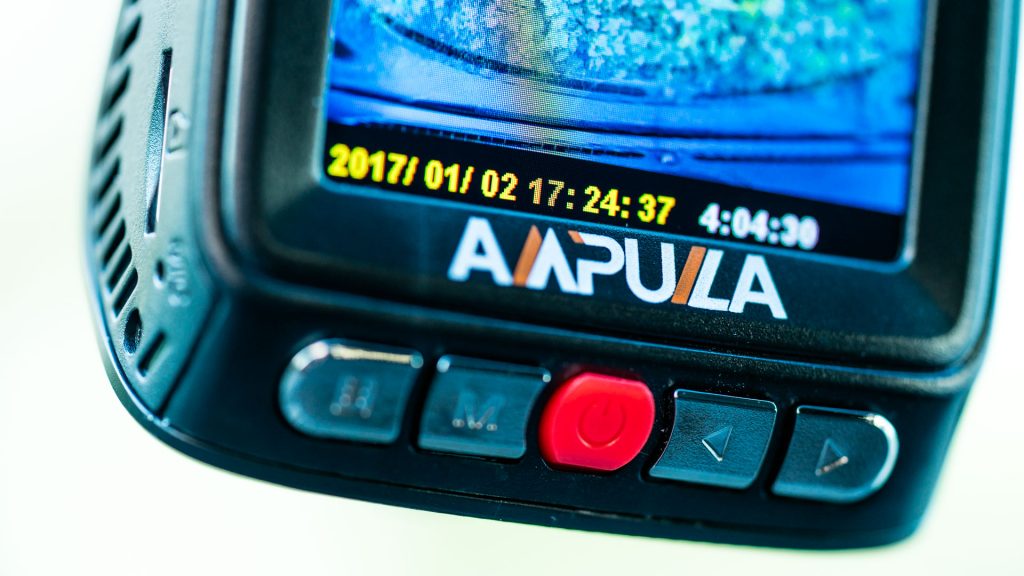
The Cruiser’s configuration process is like the Pluto’s, using an equally easy-to-use on-screen interface. The display is a bit smaller, but Ampulla has done a good job of keeping things both relatively simple and clear.
The Pluto and Cruiser in Action
Both dash cams fire up when you turn on your vehicle, and they start recording immediately. They’re also easy to install and remove – something you’ll definitely want to do to avoid enticing thieves. As mentioned earlier, you can view video on the built-in displays or move them to a PC for viewing and editing.
We’ve provided some sample videos of the dash cams during both the daytime and at night, and they both take quality video that would be more than useful to settle disputes. Generally speaking, there’s very little you need to do to keep up with your travels once you have your settings optimized.
Ampulla Pluto Day Driving
Ampulla Pluto Night Driving
Ampulla Cruiser Day Driving
Ampulla Cruiser Night Driving
The Road Ahead
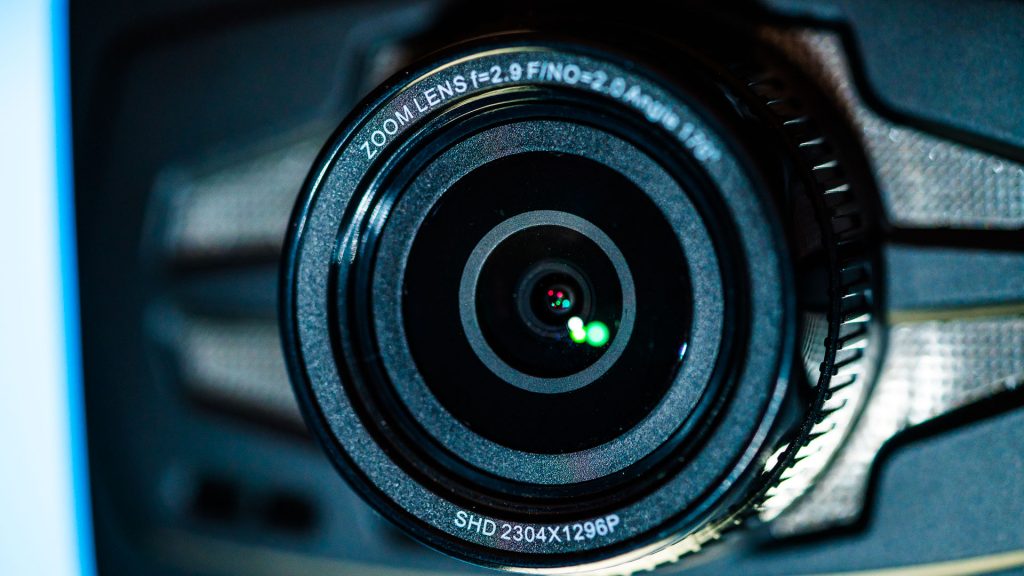
You can spend both more and less for a dash cam, but both the Pluto and the Cruiser are great options for someone with a medium budget and who are looking for excellent video quality. If you don’t care about recording where you’ve been, then you’ll find the larger display on the Pluto a real plus. The Cruiser is the best option for anyone wants a second channel, but you’ll have to make due with the smaller display and you’ll have some extra wiring to worry about.

